I’m Michael Zhang, a seasoned Chinese traveler with a passion for uncovering the stories, culture, and human touch behind every destination. To me, these towns are like time capsules, preserving the spirit of Chinese civilization over thousands of years. Today, let me take you on a journey to one of the most poetic and atmospheric destinations in East China: Xitang Ancient Town. Unlike the more crowded Wuzhen or commercialized Zhouzhuang, Xitang stands quietly, its stone bridges and water alleys weaving a subtle but profound charm.
Summary
- Xitang Ancient Town Overview
- Xitang Ancient Town Map
- Why You Should Visit Xitang Ancient Town
- Top Things to Do in Xitang Ancient Town
- Recommended Hotels Near Xitang Ancient Town
- How to Get to Xitang Ancient Town from Shanghai
- How to Get to Xitang Ancient Town from Hangzhou
- How to Get to Xitang Ancient Town from Suzhou
- FAQ
Xitang Ancient Town Overview
Xitang Ancient Town, also known as the Xitang Scenic Area, spans 3.03 square kilometers, including a 1.01 square kilometer protected historic core and a 2.02 square kilometer township area. With over a thousand years of history, Xitang dates back to the Spring and Autumn period. It is said that Wu Zixu of the Wu Kingdom developed the area’s waterworks, digging the Wuzitang Canal and diverting water from the north of Mount Xu. Because of this, the town was also historically called “Xutang.” Today, Xitang is recognized as a National 5A Tourist Attraction in China.
- Address: No. 258, Nanyuan Road, Xitang Town, Jiashan County, Jiaxing City (Apple Maps / Amap)
- Opening Hours: Open 24 hours; ticket checks are from 8:00 AM to 5:00 PM
- Suggested Visiting Time: 4 to 6 hours (an overnight stay is highly recommended)
- Best Season to Visit: All year round
- Ticket Price: 95 CNY. You can enter the ancient town for free before 8:00 AM or after 5:00 PM when staff are not on duty. During holidays, free entry is typically only available after 9:00 PM.
- Ticket Purchase: Trip.com Discounts, Klook Deals
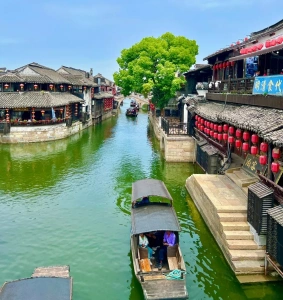
Xitang Ancient Town Map
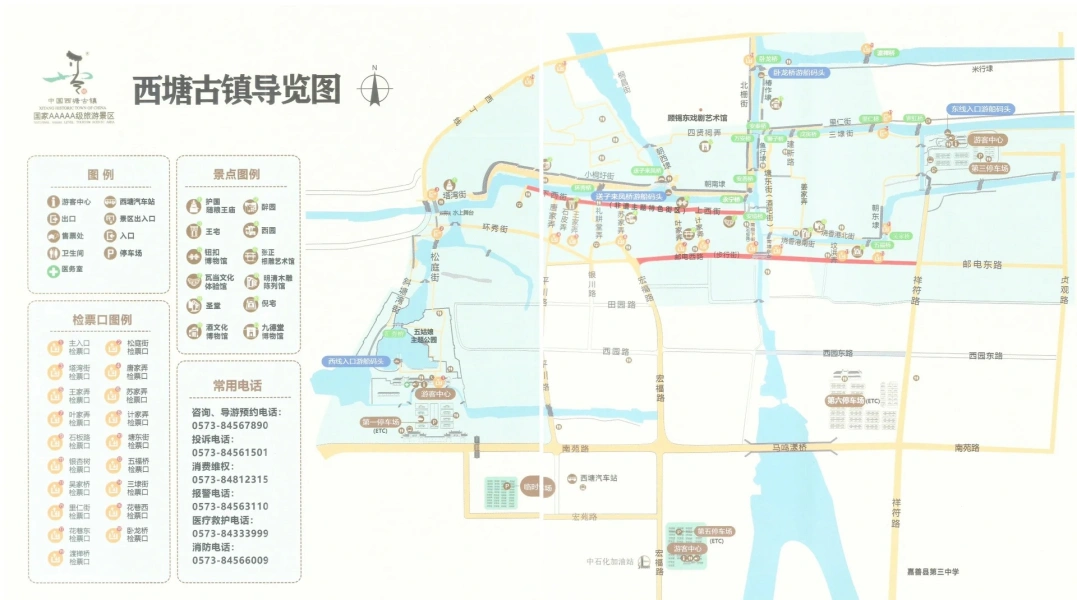
Why You Should Visit Xitang Ancient Town
Rich Historical and Cultural Heritage
Xitang Ancient Town has a long and layered history. As early as the Spring and Autumn period, it lay at the boundary between the Wu and Yue kingdoms. By the Tang Dynasty’s Kaiyuan era, riverside villages had begun to emerge. During the Southern Song, a marketplace took shape; by the Yuan Dynasty, commerce thrived along the waterways; and in the Ming and Qing dynasties, Xitang became a hub for handicrafts and trade in Jiangnan. The town still retains many traditional buildings from that era, earning it the nickname: “a living ancient town of a thousand years.” Every alley and bridge holds a fragment of China’s cultural memory.
Unique Travel Experiences
Xitang offers a truly immersive Jiangnan water town experience. At dawn, stroll along stone-paved lanes and take in the peaceful atmosphere. In the West Garden, listen to local ballads and Suzhou Pingtan performances that echo through the air like melodies in a painting. During the afternoon, hop on a black-awning boat and float through narrow water alleys, soaking in the tranquility. By night, the town transforms with shimmering lights and gentle reflections, making it a stunning sight. The night lighting project in Xitang has even won a prestigious innovation award in Asian cultural tourism.
Top Things to Do in Xitang Ancient Town
Main Attractions
Huguo Suiliangwang Temple
This temple holds deep significance for the people of Xitang. It honors Suiliangwang, a legendary Ming Dynasty general known for resisting foreign invasions and protecting grain harvests. Revered as a guardian of the nation and sustenance, he remains a symbol of faith in the region. Built during the Ming period, the temple has undergone renovations yet still preserves exquisite examples of ancient wood and brick carvings. Even today, its incense burns strong. As both a spiritual landmark and a key site for studying Jiangnan folk beliefs, this temple is well worth visiting.
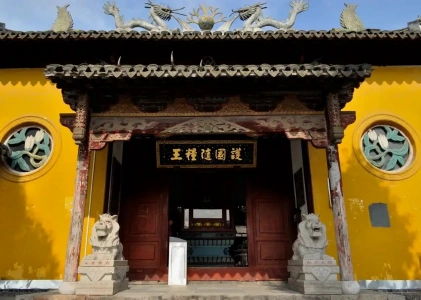
Drunken Garden (Zuiyuan)
The name “Drunken Garden” reflects the idea that one becomes intoxicated not by alcohol, but by the beauty of the scenery. This private garden embodies the essence of Jiangnan classical landscaping. With small bridges, flowing water, and lush ancient trees, every corner reveals delicate, poetic design. Stone inscriptions and couplets appear throughout, evoking the times when scholars and poets once wandered here. It’s ideal not just for photography but for sitting quietly and appreciating the subtle harmony of a southern Chinese garden.
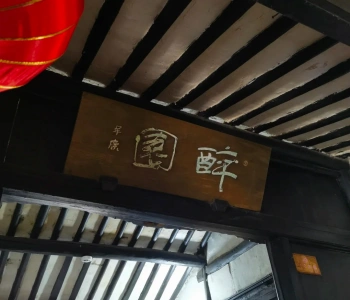
Wang Residence
Built during the Qing Dynasty by a local official’s family, the Wang Residence is one of the most prominent historical homes in Xitang. Its layout is precise and imposing, following a typical Jiangnan mansion style. Inside, visitors can admire well-preserved carvings in wood, brick, and stone, showcasing remarkable craftsmanship. Walking through the residence offers a glimpse into the lives of aristocrats from centuries past and provides valuable insight into Jiangnan’s architectural and cultural heritage.
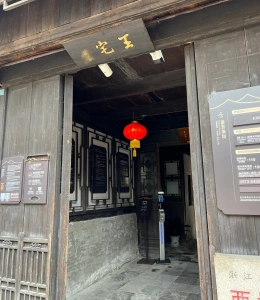
Button Museum
Xitang is famously known as the “Hometown of Buttons” in China, with nearly 500 manufacturers producing 10 billion RMB worth of buttons annually—around half of the country’s total output. Located on Sixian Shrine Lane, the Button Museum displays over 1,000 pieces ranging from Han Dynasty bronze buttons to modern plastic designs. This museum not only illustrates the history and evolution of buttons but also tells the story of how Xitang developed from a handicraft hub into a center of light industry. These small objects connect China’s fashion culture with its local economic transformation.
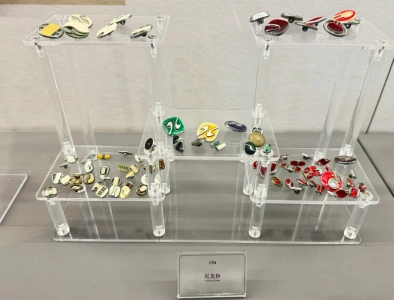
Xitang Ancient Town Ticket Guide
How to Visit Xitang for Free
You can enter the ancient town free of charge when ticket staff are off duty—before 8:00 AM or after 5:00 PM. During holidays, staff usually leave after 9:00 PM. Once inside, all scenic spots are accessible at no additional cost. As long as you stay within the town and don’t exit, you can continue exploring freely.
Staying overnight in a hotel located inside the ancient town does not grant you a ticket exemption, although some hotels offer complimentary tickets. If you check in the night before and don’t leave the area the next day, you won’t need to purchase a new ticket.
Xitang Ancient Town Ticket Prices
- Adults: 95 CNY. Evening tickets during holidays: 60 CNY
- Children: 45 CNY (ages 6–18, or height between 1.2m–1.5m)
- Students: 45 CNY (university level and below)
- Seniors: 45 CNY (ages 60–69)
- Free Admission: Children under 1.2m; seniors over 70
Where to Buy Tickets
- Online: Via the official WeChat account (“西塘旅游”) or third-party platforms
- Ticket Purchase: Trip.com Discounts, Klook Deals
- Offline: At ticket booths. Online purchases are recommended for discounts.
Recommended Xitang Ancient Town Walking Route
Starting from the west main entrance, follow this suggested path: West Main Entrance – Misty Rain Long Corridor – Lanyuan Garden – Huanxiu Bridge – West Street – Anjing Bridge – Tangdong Street – Sandi Street – Antai Bridge – Wolong Bridge – Anshan Bridge – Second Boat Dock – Songzi Laifeng Bridge – Xitang Flower Alley
- Misty Rain Long Corridor: A covered walkway lined with shops on both sides; it’s dry even in rain, hence the name.
- Lanfang: A small garden near the corridor.
- Huanxiu Bridge: A tall bridge offering a panoramic view, connecting the corridor and West Street.
- West Street: A lively street with riverside restaurants, boutique shops, and guesthouses.
- Anjing Bridge: Links West Street and Tangdong Street, offering the best view in town, especially toward Anshan Bridge.
- Tangdong Street: The town’s bar street. At night, red lanterns light up and create a vibrant ambiance.
- Sandi Street: At the north end of Tangdong Street. Quieter and ideal for introverts.
- Antai Bridge: A tall bridge connecting Sandi and Liren Streets.
- Wolong Bridge: The northernmost bridge, near Beizhan Street entrance. Below is the main boat dock and a photo wall labeled “Love in Xitang.”
- Anshan Bridge: A classic arch bridge south of Wolong, with views of Anjing Pavilion and Anjing Bridge.
- Second Boat Dock: Located at the center of the town, full of parked boats—perfect for soaking in that authentic Jiangnan water town feel.
- Songzi Laifeng Bridge: Covered in wooden wish plaques on one side and once-covered graffiti wall on the other.
- Xitang Flower Alley: A hidden gem that’s hard to find unless you’re specifically looking. Head to “Minyao Square” and look for the famous lantern-lit alley.
Recommended Local Food in Xitang Ancient Town
Qianyuman Reminiscence Landscape Restaurant
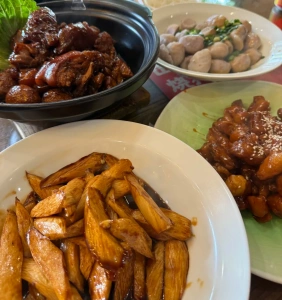
- Why visit: This is the most popular restaurant in town—arrive before peak hours or expect to wait up to an hour. Their signature dishes like Bamashui Pig Trotters with mountain eggs are rich in flavor and collagen. The “Zhuangyuan Sauce Pork” is another must-try. Don’t miss the “Ten Miles of Peach Blossom Wine”—slightly sweet and low in alcohol, perfect for casual drinking.
- Address: Northeast 240 meters from the intersection of Huanxiu Street and Yinchuan Road, Jiashan, Jiaxing (Apple Maps / Amap)
- Hours: Mon–Sun, 10:30–14:00, 16:30–21:00
- Average price: 130 CNY per person
Qianmiaoyun Crab Roe Noodles (Xitang Branch)

- Why visit: Loaded with rich crab roe, every strand of noodle is coated in flavor. Paired with vinegar and radish, it’s fresh and savory without any fishy smell. The braised snacks are also excellent. Located by the river, this spot is great for photos and makes a perfect afternoon tea stop.
- Address: No.18, Tawan Street, Jiashan, Jiaxing (Apple Maps / Amap)
- Hours: Mon–Sun, 10:00–21:30
- Average price: 82 CNY per person
Lushi Wonton
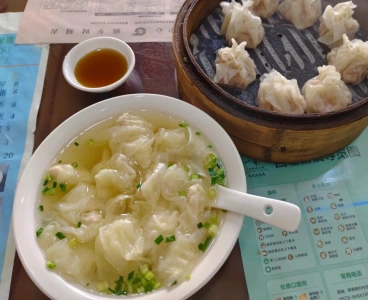
- Why visit: Multiple shops share this name, but the oldest one is under Xuyin Bridge on Liren Street. Their small wontons have thin wrappers and a savory broth with preserved vegetables. The freshly steamed soup dumplings with vinegar are also a delight.
- Address: No.18, Liren Street, under Xuyin Bridge, Jiashan, Jiaxing (Apple Maps / Amap)
- Hours: Mon–Sun, 06:00–17:00
- Average price: 15 CNY per person
Recommended Hotels Near Xitang Ancient Town
It’s highly recommended to stay inside the scenic area of Xitang Ancient Town. Immersing yourself in this ancient water town overnight adds a whole new layer to the experience.
Yuanzhu Hotel-Xitang
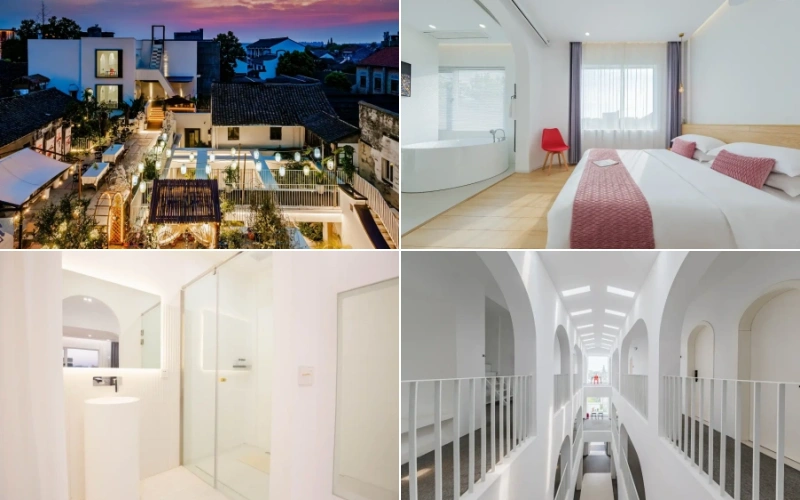
- Location: Inside Xitang Ancient Town, 5-minute walk from Yongning Bridge
- Price per night: from 170 CNY
- Check Rates: Trip.com Specials
- Rating: 9.8 on Trip
- Special Amenities: Gym, laundry room
Perfectly located in a quiet alley just off the town’s main street, this boutique guesthouse offers both serenity and convenience. Open your window to views of tiled rooftops, stone bridges, and flowing canals. Morning and dusk light up the courtyard beautifully. This is one of the best-value stays in Xitang.
The rooms combine traditional charm with modern comforts. Wooden beams and carved lattice windows maintain the house’s historic texture, while high-quality bedding, smart appliances, and clean bathrooms bring modern convenience. Especially notable is the tea platform by the window—sip a pot of complimentary local tea while listening to wind chimes gently ringing. The host is exceptionally friendly and helpful, even offering hand-drawn maps and secret restaurant recommendations that let you experience the authentic local lifestyle.
Xitang Lightyear Hotel
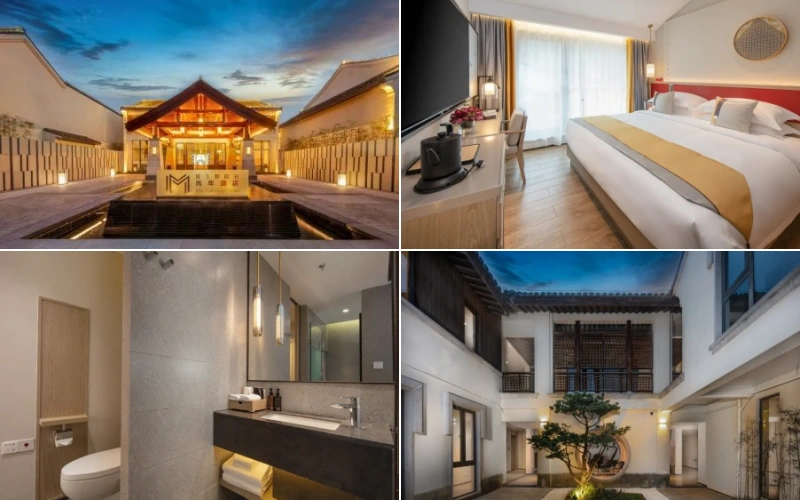
- Location: Inside Xitang Ancient Town, 5-minute walk from Drunken Garden
- Price per night: from 457 CNY
- Check Rates: Trip.com Specials
- Rating: 9.6 on Trip
- Special Amenities: Gym, outdoor pool, family rooms, 4-person suites
This hotel boasts a prime location—right at the north entrance of Xitang’s scenic area. It’s only a 7–8 minute walk from Songzi Laifeng Bridge.
The hotel grounds resemble a small garden, offering clean, spacious rooms and high-quality toiletries. It also features a private underground parking lot, making it convenient for self-driving guests.
How to Get to Xitang Ancient Town from Shanghai
If you have plenty of time, you can take the metro and bus combo, which offers flexibility but takes 2–3 hours. For those staying near a train station, taking the train + bus is more efficient. If you’re traveling with seniors, the tourist coach is the most comfortable option.
Tourist Coach
From Shanghai South Long-Distance Bus Station, you can take a direct coach to Xitang Ancient Town. The drop-off point is Xitang Bus Station (Jiashan North Station). The ride takes about 2 hours and costs around 70 CNY.
Additionally, Shanghai Pudong Airport has two daily buses to Xitang at 11:00 AM and 4:40 PM. The journey covers approximately 298km and costs 95 CNY—perfect for travelers near the airport.
Train + Bus
There are two train stations near Xitang: Jiashan South Station (high-speed rail) and Jiashan Station. From Shanghai Hongqiao Railway Station or Shanghai South Railway Station:
- To Jiashan South Station: Take the high-speed train (25 minutes, 30 CNY), then transfer to bus K222 to Xitang Ancient Town
- To Jiashan Station: Transfer to bus K210 to Xitang Ancient Town
- Train Route: Shanghainan – Jiashannan
- Train Tickets: Check Price
Metro + Bus
Take Shanghai Metro Line 17 to Zhujiajiao Station, exit via Exit 2, then transfer to Demonstration Zone Bus Line 3 to reach Xitang Bus Station. Bus fare is 5 CNY, and travel time is around 1 hour. Including the metro ride, the total journey takes 2–3 hours and costs about 11 CNY.
How to Get to Xitang Ancient Town from Hangzhou
Tourist coaches are the most convenient way to travel. They are direct and affordable. Depart from Hangzhou Jiubao Coach Center and reach Xitang in about 1.5 hours.
Tourist Coach
From Hangzhou Jiubao Coach Center, there are 10 daily buses to Xitang (Xitang Bus Station / Jiashan North Station).
- Departure times: 6:55, 7:45, 9:00, 10:05, 10:55, 11:45, 13:10, 14:10, 15:25, 18:15
- Ticket prices: 38 CNY (standard), 42 CNY (air-conditioned)
- The trip takes approximately 1.4 hours and is very convenient—no transfers required.
Train + Bus
From Hangzhou East Railway Station, take the high-speed train to Jiashan South Station, then transfer to K222 bus to Xitang Ancient Town. Total travel time: around 40 minutes, fare: 50 CNY
- Train Route: Hangzhoudong – Jiashannan
- Train Tickets: Check Price
How to Get to Xitang Ancient Town from Suzhou
If you’re not on a tight schedule, the metro + taxi combination offers flexibility and is cost-effective for groups of two or more. If you’re near the bus station, try the tourist coach.
Tourist Coach
Direct buses are available from Suzhou North Square Bus Station and Suzhou Railway Station to Xitang (Xitang Bus Station / Jiashan North Station), but there are only two daily departures: 8:50 AM and 2:20 PM.
- Ticket price: 25 CNY
- Travel time: around 1.5 hours
Metro + Taxi
Take Suzhou Metro Line 4 to Tongli Station, then catch a taxi to Xitang Ancient Town.
- Metro fare: 6 CNY; taxi fare: 60 CNY
- Total travel time: about 2 hours
FAQ
Not very. Many scenic spots in the town require visitors to leave wheelchairs or strollers outside and continue on foot. The numerous steps and bridges also make navigation difficult.
The South Visitor Center of Xitang Ancient Town offers free luggage storage with a valid ticket. Note: The service closes at 5:00 PM.

 English (US)
English (US)  English (Hong Kong)
English (Hong Kong)  English (Malaysia)
English (Malaysia)  English (Singapore)
English (Singapore)  繁體中文
繁體中文 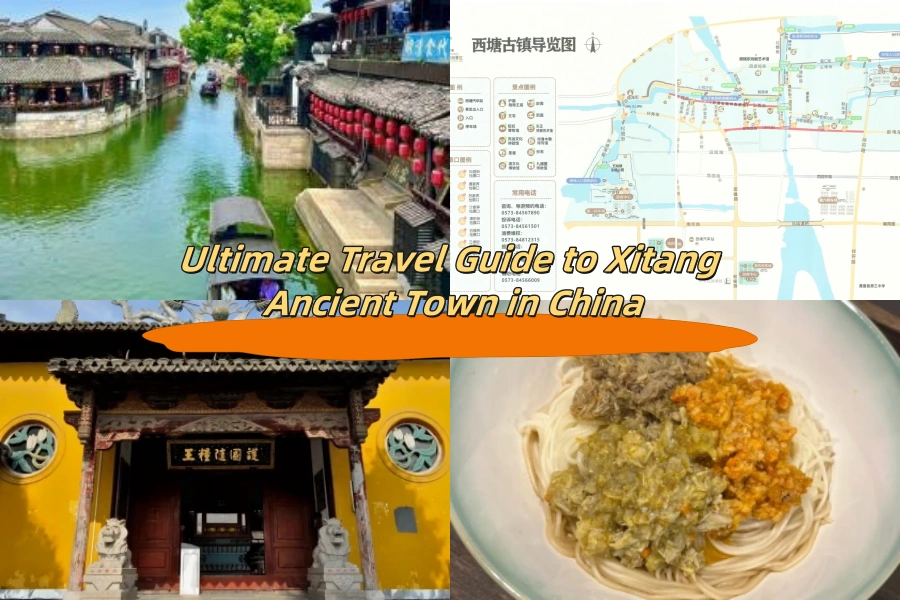
Comment (0)